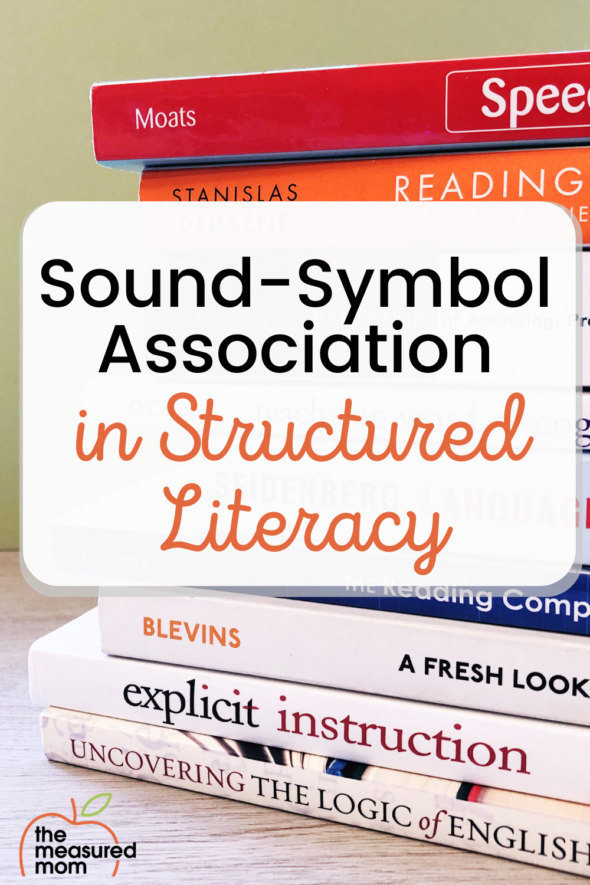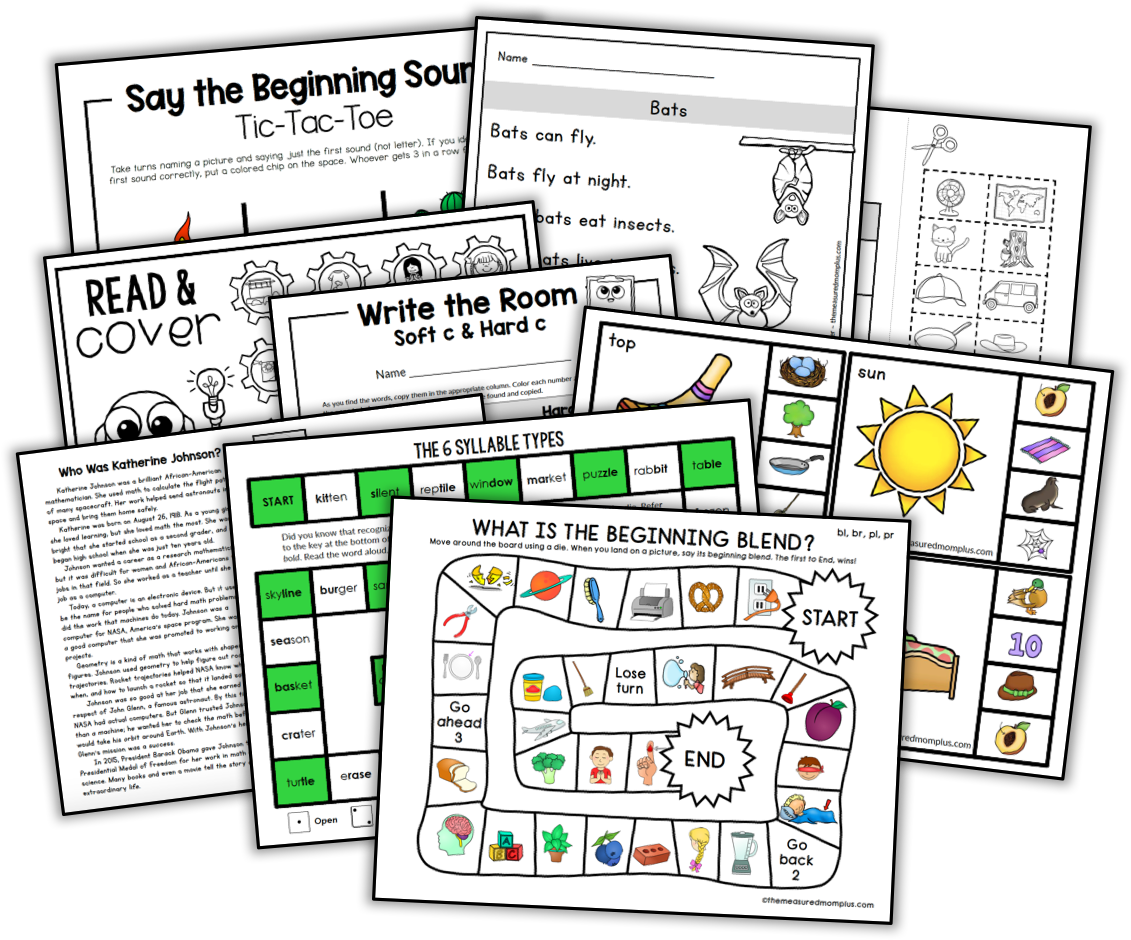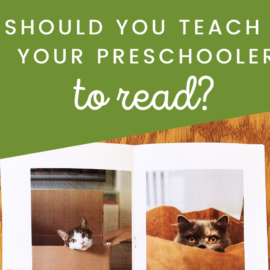It’s time for another post in our structured literacy series! Today we’ll look at teachingsound-symbol association.

Have you been following along with our series about structured literacy?
We’vedefined structured literacy,compared it to balanced literacy, and explainedhow to teach phonologyin a structured literacy classroom.
Today we’re going for the big one … sound-symbol association.
What is sound-symbol association?
We’re teaching kids to associate sounds (phonemes) with symbols (graphemes).
In other words?
Phonics.
Like it or not, phonics has been a hot button topic for decades.
Let’s tackle the “why” first. Why do we need to teach phonics? Don’t some people learn to read by reading whole words?
Here’s the thing.
Why we need to teach phonics
Skilled readers use phonics to read words.
This isn’t intuitive.
I know itfeelslike you’re reading words as wholes as you breeze through this blog post. But if you were truly doing that with everything you read, you’d have images of over 30,000 words in your brain at once. Scientists tell us that’s just not possible.1
(And even if it were possible, how could we explain that you read the same words in different fonts, or in miXeD CAses? You’d need images of all of those in your brain too.)2
Scientists tell us that skilled readers are actually (very, very rapidly) matching the sounds to the letters as they read. While we may refer to context to help us define a word or understand the text, we solve words by matching the phonemes to the graphemes (i.e., we use phonics).

This means that even that rare number of people (around 5%) who learn to read without direct instruction3are using phonics. They just figured it out on their own.
It helps to know how the brain learns to read.
I published awhole podcast episodeabout this, but here’s the quick version: our brains are not “hard-wired” to read. We have to train them to read. We do this by helping different parts of the brain work together to allow us to sound out words and permanently “map” them into our sight word vocabulary.
What phonics skills do kids need to learn?
As we stated earlier in this series, a key feature of structured literacy is that instruction is systematic, sequential, and explicit.
This means that we need to know the order that we’re going to teach phonics skills. And we’re going to follow it. (This doesn’t mean we can’t differentiate as needed, but we’re not going to be haphazard about phonics instruction.)
A suggested sequence for teaching phonics skills
There isnouniversal sequence for teaching phonics skills; every program is different.There is not one right way.
Likely, you have a phonics curriculum. You should follow its scope and sequence.
But if you’re looking for ideas, here is a possible order.
- Consonants and short vowel sounds … taught in an order that allows children to start reading short words as soon as possible
- CVC words
- Beginning digraphs (thin,ship,chat, etc.)
- Double final consonants (fill, kiss, etc.)
- Beginning and ending blends (frog,stun, band, dust, etc.)
- Simple suffixes (cats, bigger)
- CVCE words (bake,dime, etc.)
- Y as a vowel (fly)
- Long vowel teams (weed, rain, toad, etc.)
- R-controlled vowels (cart, fork, bird, fur, germ)
- Diphthongs and other long vowel patterns (saw, boy, haul, coin)
- Prefixes and suffixes(redid,unpack, careless, sitting)
- 6 syllable types are taught throughout the above sequence as appropriate (open, closed, silent e, vowel team, r-controlled, consonant+le)
When do kids need phonics instruction?
Kids need phonics instructionafterthey have at least some level of phonemic awareness. They must understand how to break words apart into their individual sounds (phonemes) and how to blend those phonemes to make words.
Phonics will not work if kids do not have phonemic awareness.
Assuming kids have the necessary pre-reading skills, you can start teaching phonics as young as preschool.
I always taught my kids all their letters and sounds before teaching them to read.
But if your students have phonemic awareness, you can go ahead and teach beginning reading while you teach the letters and sounds.

Just make sure you teach the sounds in an order that allows your learners to read words quickly (for example, teach the short sound ofaearly on so they can read simple three-letter words).
Kids definitely need structured phonics lessons in kindergarten, first, and second grade. Older, struggling readers will need focused phonics in third grade and beyond.
How should we teach phonics?
We teach daily focused phonics lessons that look something like this, as recommended by Wiley Blevins.4
- Begin with review. Have children reread a passage or brief story from a previous lesson.
- Do quick phonemic awareness exercises.
- Directly teach the new sound/spelling relationship
- Model how to blend words with the new sound-spelling and give children practice blending words.
- Have children build words using letter cards or magnetic letters.
- Provide decodable text with words that are decodable based on sound-spellings that have been previously taught.
- Dictate words using the new and previously learned sound-spellings for children to write.
Did you catch that last bullet?
Final thoughts
In today’s post we discussedwhywe need to teach phonics. We looked at a possible sequence for teaching phonics skills, noted that children need phonics instruction in K-2 (and perhaps later), and we looked at the recommended pieces of a phonics lesson.
Stay tuned for the rest of our series!
CLICK HERE FOR A PRINTABLE VERSION OF THIS BLOG POST
Part 1Part 2Part 3Part 4Part 5Part 6Part 7
- “How We Remember Words and Why Some Children Don’t”presentation by David Kilpatrick
- Equipped for Reading Success, by David Kilpatrick
- Nancy Young’sLadder of Reading
- Phonics from A to Z, by Wiley Blevins






Elizabeth Bain
HI!
I recently found your site and stumbled upon the Structured Literacy series. I have a son who is struggling, this is what has developed the somewhat obsession I now have with learning everything I can to help him. The other blog posts in this series has a printable download and I’m wondering if there’s anyway, this one can also be made into one. I’m on the go all the time and I like to take readings with me, and highlight (I’m a bit “old school”).
I appreciate all the teachings and lessons you both have given on structured literacy!
Anna Geiger
Thank you for your interest and your request, Elizabeth! We’ve added a pdf version of the blog post at the end of it.